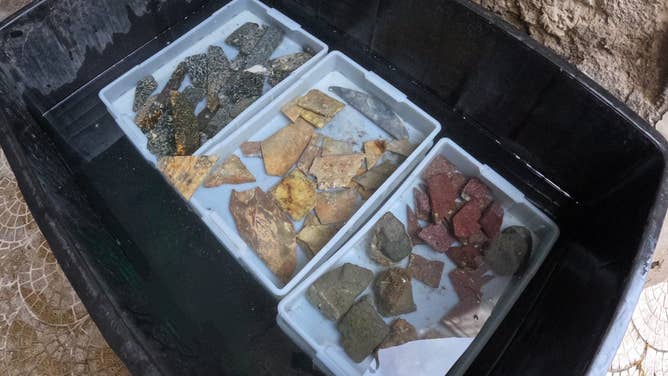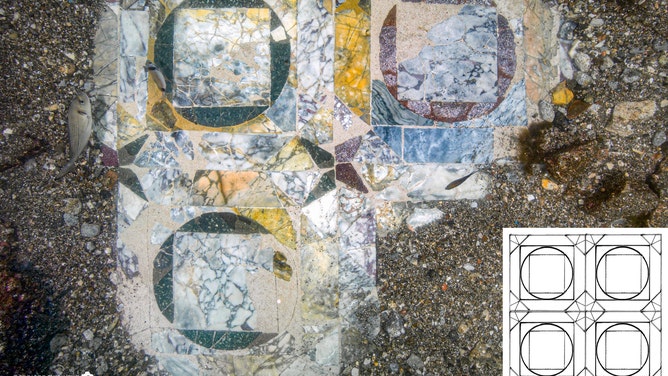See it: Ancient Roman underwater mosaic discovered off Italian coast
The mosaic dates to around the end of the Roman Empire in 3rd century AD and covers about 250 square meters of the villa’s reception room, according to the Parco Archeologico Campi Flegrei
FILE: Lava explodes, smoke puffs out of Mount Etna volcano in Italy
Video shot on Tuesday shows activity from Italy’s Mount Etna, one of the most active volcanoes in the world, according to the U.S. Geological Survey. (Courtesy: Reuters)
NAPLES, Italy – Archaeologists are working to restore thousands of pieces of marble that make up a mosaic on the floor of a now-submerged villa on the southwestern coast of Italy.
The mosaic dates to around the end of the Roman Empire in 3rd century AD and covers about 250 square meters of the villa’s reception room, according to the Parco Archeologico Campi Flegrei, which is one of the organizations involved in the mosaic restoration project.
Images from the PACF show thousands of pieces of repurposed marble that were put together to create colorful designs on the reception room floor.

Fish swim over the mosaic.
(Edoardo Ruspantini / Parco Archeologico Campi Flegrei / FOX Weather)
Due to the underwater setting of the villa, fish can be seen swimming over the mosaic.

Fish swim over the mosaic.
(Edoardo Ruspantini / Parco Archeologico Campi Flegrei / FOX Weather)
PACF noted that the walls surrounding the mosaic measured more than 10 meters high, but had collapsed on some of the pieces of marble.

Part of the mosaic.
(Parco Archeologico Campi Flegrei / FOX Weather)
Archaeologists will continue to excavate the villa and restore the mosaic both underwater and on land, the PACF said. They noted that portions of the mosaic were placed in large freshwater tanks to remove salt from the seawater.
Located in the ancient city of Baiae, the villa, along with a coastal strip of Baiae, started sinking into the Mediterranean Sea about 1,500 years ago, according to the PACF.
This was due to volcanic activity known as bradyseism, said the Protezione Civile of Italy. This phenomenon is a signature characteristic of the archaeological site of Campi Flegrei, or the Phlegraean Fields, which includes the villa excavation site.



